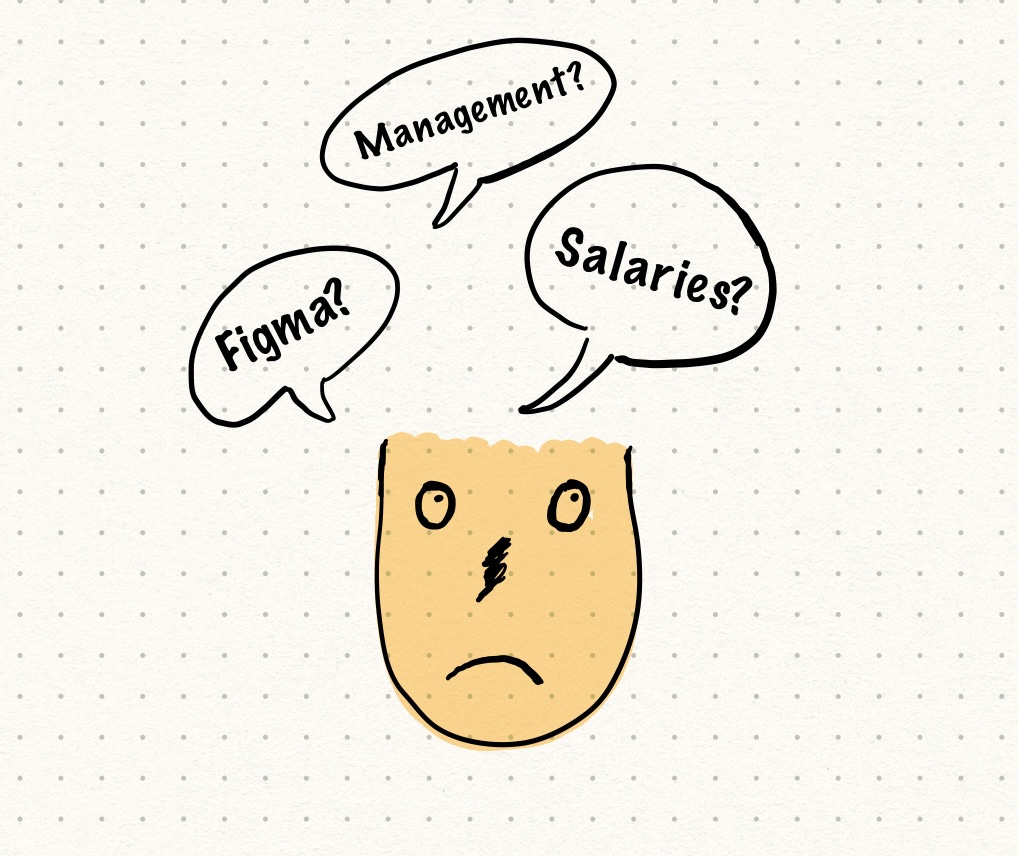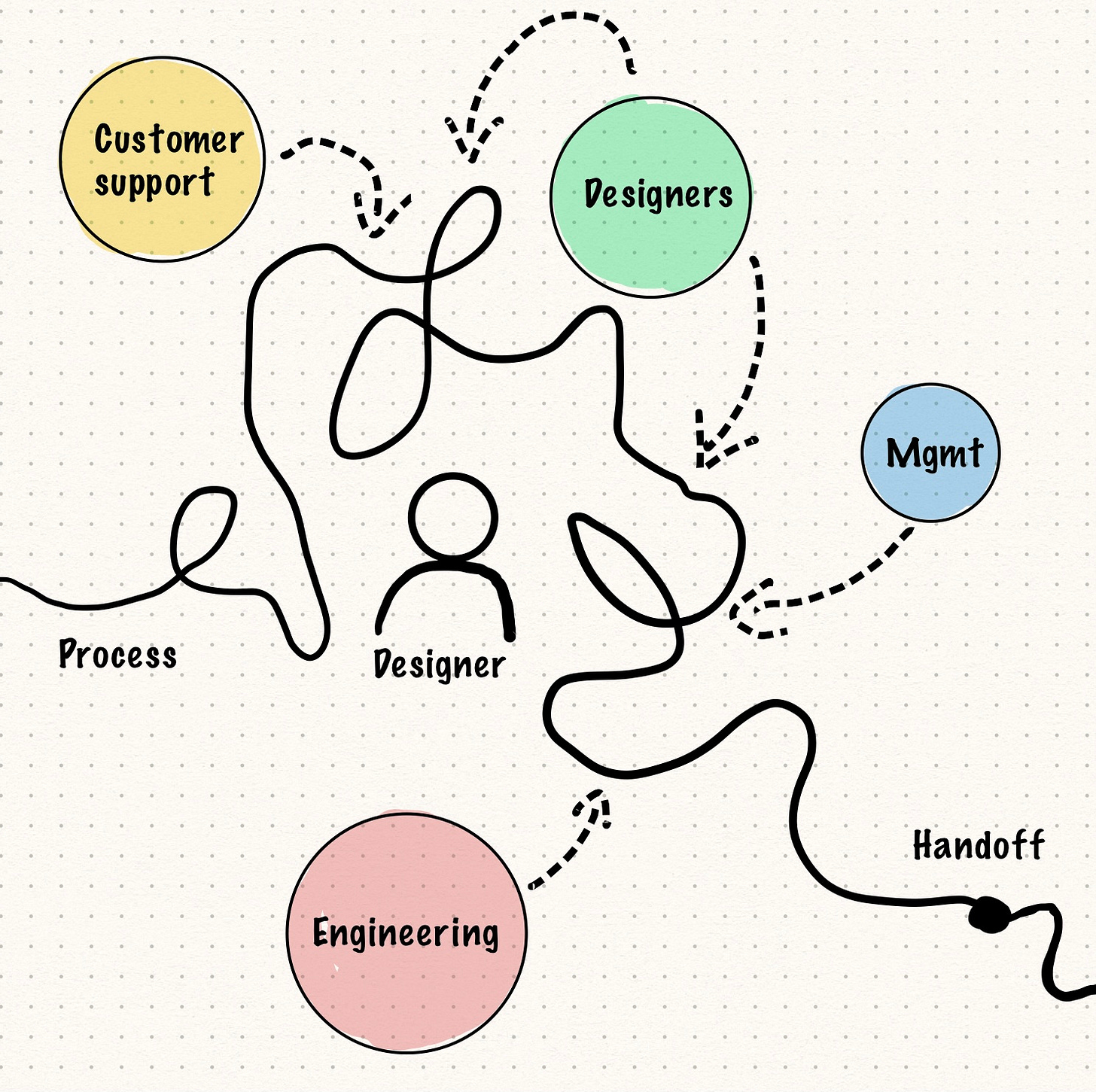From Maker to Leader
My first year with managing people and lessons encountered along the way. Building leadership principles and mantra.
In 2020 I made one of the most important changes in my career. I moved on and tried to lead more than craft. Moving from a product designer position to leading a product design team has been a forming moment that brought a lot of joy and emotional struggles at the same time. We fought the coronavirus crisis inside of a travel company. We had to redefine the design process to accommodate fast guerrilla research and new ways of design critiques. We had people depart under my leadership; people were promoted into new positions. This year I remotely sat at more than 50 hiring interviews with amazing designers across the world. We had to reorg the department 3 times, and I tried to find the right amount of involvement in important business projects. These are a few challenges that formed my thinking on what leader do I want to be. I would call this article a "junior leadership mantra," aka my initial personal principles by which I lead as of writing this. As I grow & learn, I tend to refine them further.
I tried to write this post in an honest personal way, with the hope it might inspire others. Either take on new leadership responsibilities (and find your own personal mantra) or spring new thoughts in more seasoned professionals' minds.
Who am I?
Let me start with a key struggle. Throughout my entire design career, I always faced impostor syndrome. No matter what job I got, I always felt that it might be a mistake. That I faked my way to be a designer. Taking the next step to move from a design contribution role to leadership made me really anxious.
The role of a leader is different from the role of a contributor. Suddenly, my days are filled with meetings, deep business strategy discussions, interviews, and the team's general holistic direction. Although I try to use Figma for any presentation or infographics I'm making, slowly, I feel how I'm losing touch with the design craft. I'm not thinking about the UI flows daily, and when I'm suddenly dragged into a design problem discussion, I have a harder time providing constructive feedback. Altogether I feel my core design skills disappearing.
At the same time, I feel like a junior manager. After all, I have been figuring it out for less than a year.
The impostor was kicking me hard. Not a designer, but not a strong leader. I started being scared. I will end up not being good at anything and ultimately useless in the team. It felt like I was in the middle of two worlds. One question was looming in my head. Who am I? I will try to provide my current, up-to-date answer to this question in the upcoming 2 paragraphs. Focused on hiring & people and the design & process.
On hiring & people
I try to put people at the intersection of everything I'm doing. After all, this newsletter's name is "People Over Pixels." I have always considered strong hiring as a key reason for how to succeed as a team.
Since I joined the current company, the design team has been understaffed. There hasn't been a moment when I have felt we have enough people to do the work we are expected to deliver. We always told ourselves that we would rather be understaffed than hire the wrong person. I still believe this makes sense! As I have been sitting in numerous hiring interviews throughout the year, I realized an interesting truth:
I tend to hire people who make me feel uncomfortable.
What does that mean? To explain, I will assume that there are 2 types of uncomfortable feelings.
One type is when a candidate makes you feel uncomfortable as a person. Overly confident designers without showing the work or blaming others for mistakes in the past. These tendencies are usually early to spot on and are evaluated as not a culture fit. You can grow people professionally at work, but it would be tough & expensive to change these personalities.
The second type comes from people who make me uncomfortable as a designer & leader. This happens when during the interviews, the designer shows a level of thinking, solution, or answer I am surprised with. Showing something I myself had no idea would be possible. Or, they present a powerful skill or area of skills I could not match. For a moment, these encounters put me into a position where I feel exposed and uncomfortable. Will this designer be able to work with me, even though I can't offer the same level of particular design skill? This is the moment I learned to understand as the “we are onto something” click. I started to embrace this feeling and be transparent about it. As a leader, my goal is to put together the best possible team, and that requires hiring people who are smarter than me. This way, we will be able to challenge each other and grow together.
Hiring people who inspire and scare me from the beginning builds natural respect between us. We learn, trust, support each other. I try to build relationships based on integrity, equality, and a common mission rather than an organization’s hierarchy.
On design & process
The number one quote I use in my work is, "Design is the glue." The design process is the moment in the development cycle when feedback is gathered from around the company. It glues together random departments that otherwise don't collaborate that closely. Customer support, management, engineering, and others can voice their insights.
Throughout iterations & feedback, designers eventually end up preparing a solution that goes into development. This requires significant ownership, while hard decisions need to be made. Although it is a daunting and messy process, I don't try to interfere much and make decisions. Designers & Product Managers are the experts and the best people to choose the right way to solve a particular problem. I try to provide the team regularly with guidelines & frameworks they can use. Not to tell them how to design, but to help them bring more clarity into the mess. For example, last quarter, we introduced "types of design critiques," which is a guideline for approaching different design feedback sessions. Ranging from internal design discussions to presentations to management & CEO.
Furthermore, I study our company’s objectives and keep myself constantly attached to strategic discussions. Thanks to this, I can communicate our main goals in the form of principles the designers can use to make their day-to-day decisions easier.
So, who am I?
Looking back at the first year, the belief in the superstar people (hiring & people) and providing a stage to shine for them (design & process) are the primary sources of calm, which helps me with the impostor anxiety I feel like a new leader.
It is not all peachy. Building an impactful team that clicks together feels rewarding but means that sometimes we don't hire great designers. It is not because they are not good, but because their skillsets don't fit the group's current skill matrix.
Giving designers a voice inside of a big company means that as a mid-manager, I need to understand where we are going and what impact the design team makes on the company’s growth. As designers visibly help the company, they expect that the company will support them back. This sometimes puts me into a position when I need to have hard discussions with my managers and higher leaders. It allows me to fight for the team, which showcases the weaker side of me. I tend to get emotional about voicing these concerns sometimes. It almost makes me feel like an activist or drama queen. However, I made peace with myself that I'm willing to go all out when it comes to the people on the team.






